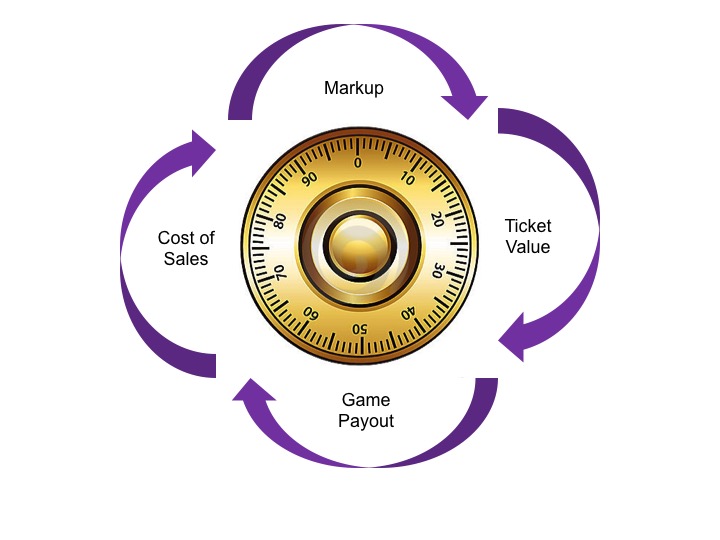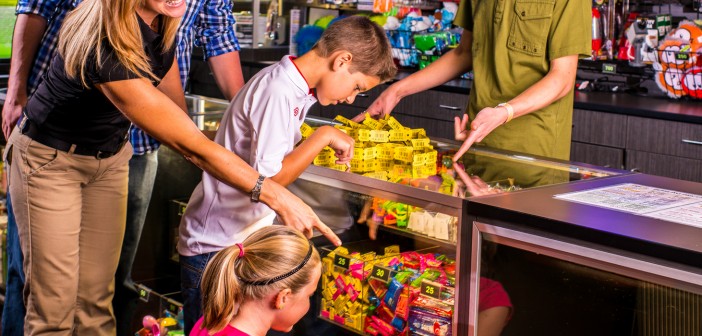Redemption: Is It Art or Science?
The Balance that Creates Success Starts with the Fundamentals
By George McAuliffe, Chief FEC Strategist, Redemption Plus

George McAuliffe
As this issue delivers RePlay’s focus on redemption, it’s a good time to revisit the basics. People ask: Is redemption art or science? The answer is that it’s both! The “Art” is in having a good feel for what customers want, creating the experience, picking the right pieces, and presenting them attractively. The “Science” starts with the numbers: What do our games truly pay out in value? Do I balance my cost of sales percentage against my game sales?
Good redemption operators achieve balance. Spending all of our time in front of a computer crunching numbers means that we miss what our customers are saying. On the other hand, if we never create a payout report, or analyze one, or take the time to test our assumptions with real numbers, our business can get away from us real fast.

Controlling Merchandise Cost Starts With Your Games
A well-managed redemption program goes beyond a well-stocked redemption center. It actually starts with the games you select for your game room. The Art comes in knowing your customer, who they are, their ages, what they like in games, and then tailoring the game mix accordingly. The Science on the game side tells us that every redemption game (including cranes and merchandisers) is designed with a certain “payout” level. Payout is [tickets out, multiplied by ticket value, divided by game sales]. It’s important to maintain any game at, or at least near, its designed payout because that is how it will maximize earnings.
Science requires some infrastructure. Fortunately that’s easier than it has ever been with today’s debit card systems. The data can tell us when we have an increase in merchandise cost of sales. The art of knowing game room dynamics can tell us what caused that and how to fix it.
Next Stop: The Redemption Center
The Art in terms of merchandise includes having a good feel for what customers want, picking the right prizes, and presenting them attractively. The Science side starts with the numbers here, too.
The bottom line for redemption numbers is cost of sales: the cost in prizes redeemed at the redemption center as a percentage of our redemption game sales. This measures the profitability of our redemption program and it is the key number in measuring the value that we deliver to our customers. Here, we can use Science to track results and help guide us, but we need the Art of understanding our customers, why they come to play, and what prizes excite them, to make the data useful.
I’ve been on a crusade for years arguing that our industry needs a common, reality-based understanding of how to calculate the value of the redemption ticket.
Many people incorrectly believe that ticket value is an arbitrary number that they assign to each ticket: We often hear “our tickets are worth .01 cents,” also known as “a penny a point.”
In fact, ticket value is actually a direct result of the markup we apply to what we pay for a given item of merchandise. A penny a point means that if we pay $1.00 for a piece of plush it goes on the shelf at 100 tickets. If we do have a markup, say a markup of two, this means we multiply our cost by two to set the shelf price in tickets. When we do this our ticket value becomes .0050 (½ cent per ticket).
An accurate understanding is necessary to correctly measure the true value we deliver to the player.

A great guest experience must include a great selection of merchandise, but also a fast and efficient process of redeeming tickets for prizes.
Understanding the Process for a Great Guest Experience
We had an arcade several years ago where the data showed across the board sales declines. We studied the macro reasons: local employment, drive time dynamics, location strength, competition, etc. No valid reason jumped out at us. We visited our location on a weekday, and everything looked good. It wasn’t until we spent some time there on the weekend –– at peak period –– studying our customers and asking them questions that the problems were revealed.
Our redemption check out process was terrible. Customers had to wait too long to check out. It was ruining their experience and reducing return visits. We installed a redesigned redemption counter, organized our whole price point system with check out in mind, and improved our staff training to emphasize speed and courtesy. The numbers turned around and reached new heights.
That experience was a great lesson in the value of both “Art” and the “Science” to solve problems and improve performance.
George McAuliffe has created and operated family entertainment centers from 2,000 to 150,000 square feet as a corporate executive, entrepreneur and consultant. He’s President of Pinnacle Entertainment Group and leads the company’s strategic advisory team. George, recently moved back “home” to the Jersey Shore with his wife Julie, has a passion for passing along what he’s learned in the fun business to the new generation of operators and suppliers.
Readers can visit grouppinnacle.com for more information or contact George at georgemc@group
pinnacle.com; phone: 314-422-7197.




